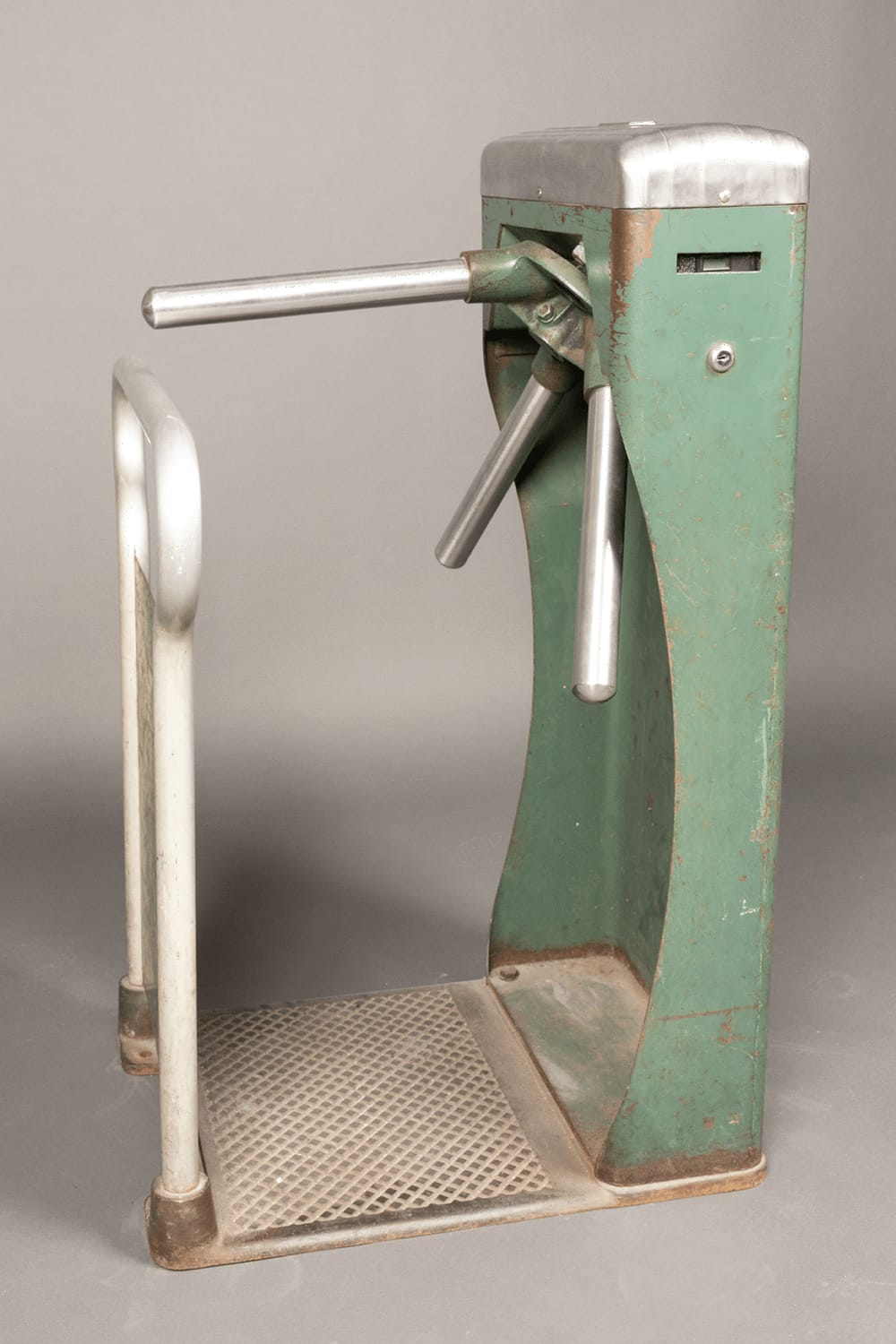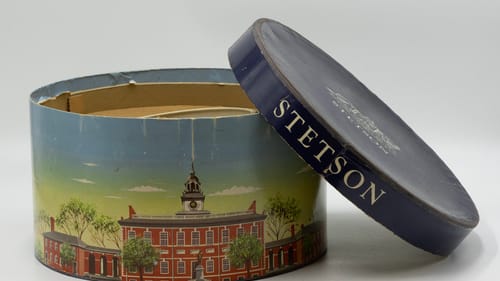Stay in the Loop
BSR publishes on a weekly schedule, with an email newsletter every Wednesday and Thursday morning. There’s no paywall, and subscribing is always free.
Discover Philly’s new, old, and untold stories with these fascinating objects
PAFA presents Philadelphia Revealed: Unpacking the Attic

The Atwater Kent Museum, later dubbed the Philadelphia History Museum, closed in 2018. Fortunately, its collection lives on at Drexel University, and now, it gets a new exhibition at the Pennsylvania Academy of the Fine Arts (PAFA). Philadelphia Revealed: Unpacking the Attic evokes memories with every step—if not your own, then ones you’ve heard from older friends and relatives.
The show, a nod to the old museum’s informal title, Philadelphia’s Attic, features 600 objects from the Atwater Kent Collection (AKC), which was founded in 1939 by inventor and radio pioneer A. Atwater Kent to preserve Philadelphia history. And the new exhibition is just one part of the experience: Philadelphia Revealed is also a WHYY-produced podcast and a First Person Arts platform for sharing your Philadelphia stories.
Paintings, photos, postcards, and diaries
Of course, the usual museum suspects are here, but so is the stuff of everyday life, elevated to unexpected prominence. Benjamin West’s portraits King George III (1778) and Queen Charlotte (1775), in gold frames topped with little crowns, from the Historical Society of Pennsylvania, hang right by Water Department clerk William H. Green’s (1875-1959) photograph Seven Stars (Hotel), taken in 1909. Green’s image depicts the long-gone Frankford structure looking like a patriotic wedding cake, its three tiers bedecked with star-spangled banners. Dozens of his glass negatives of Northeast Philadelphia were donated by Louis Gramlich. Many such gifts made AKC’s photographic archive particularly strong.

A picture by William H. Sliker (1873-1951) depicts Fox Chase’s Loney Street in 1910, a dirt road edged in electrical poles, with boys playing ball. Images from Sliker’s studio were given to AKC by Dr. Harry Silcox (1933-2009), longtime principal of Lincoln High School, historian, and author of several books on Philadelphia history.
Philadelphia Revealed comes to life in the images and interactives designed by Drexel media students. In one, you can swipe through vintage postcards of the 1876 Centennial Exposition while reading excerpts from the youthful diary of attendee Dr. Frances Allen DeFord (1855-1937). DeFord later graduated from the Women’s Medical College of Pennsylvania, a forerunner of Drexel University College of Medicine.
Philly’s life on the water
Philadelphia’s long and influential heritage as an important port and shipbuilder (with Camden, across the river) is represented by a few items from AKC’s extensive maritime holdings. A mahogany and oak ship’s wheel, five feet in diameter, guided City Ice Boat No. 1., commissioned in 1837, to keep the Delaware River navigable during frigid winters. The vessel could break through as much as a foot of ice.
Maritime trade brought seamen, whose spiritual needs were served by the Floating Church of the Redeemer, a Gothic-style Episcopal church constructed in 1849 on two barges. The Floating Church is discussed in one of 10 podcast episodes.
A home for trash, treasures, and memories
Besides accepting donated materials, the collection proactively rescued items from closing businesses, organizations shutting down, and museums deaccessioning holdings, as when the Historical Society of Pennsylvania discontinued its museum-style collection. Anything having to do with Philadelphia was of interest, whether obtained by gift, salvage, scavenge, or auction.

A painted Toleware Coffee Tin dating to the last half of the 19th century was found in a demolished home. A squashed rusty teapot was dredged from the bottom of the Delaware by the US Army Corps of Engineers. Among Revolutionary artifacts is a life-size painted board cutout of a British Grenadier (about 1778), made for the Meschianza, a huge celebration marking the departure of Cmdr. William Howe during the British occupation of Philadelphia.
Mysteries from the attic
Artifacts of uncertain provenance are tagged “Found in the collection.” Periodic efforts began in 1977 to clarify holdings and how they came to the Atwater Kent. The task now falls to Drexel, which has committed not only to document current holdings, but to fill in events, groups, and stories that have been overlooked.
The cross-section on view, assembled by curators Page Talbott, Stacey Swigart, and Melissa Clemmer, will enthrall anyone of any age, Philadelphian or not. If you grew up here, however, you’ll likely spend more time than you anticipate visiting Philadelphia Revealed.
You might be transfixed by a 20th-century Horn & Hardart Recipe Box, or by the cost of H&H’s Big Value Lunch on July 10, 1963: 69¢. If you’ve been a Philadelphia fan for more than a minute, you may gravitate to the spotless steel turnstile that admitted millions into Veterans Stadium (1971-2003), or a bright blue bleacher seat (1960) from Shibe Park, or Bobby Clarke’s hockey stick, or Jimmie Rollins’s turf shoes.
New, old, and untold stories
Philadelphia Revealed is all about memories and stories, those represented by the artifacts, and those they evoke. During the show’s run, First Person Arts, the nonprofit that cultivates local storytelling, will facilitate two public events. The group also developed an interactive game for gallery visitors to document their stories and add them to FPA archives. (BSR executive director Neil Barhan also serves as FPA’s director of applied storytelling.)
Consider the untold stories contained in the thick Philadelphia Detective Bureau Log/Mug Book (1907-1911). It’s open to a spread of front and side views of solemn, mostly male, faces. In the side views, everyone wears a hat, overwhelmingly bowlers, giving the petty criminals the appearance of disappointed bankers.

You’ll be struck by the evolution in how we communicate and get information. No child of 1966 whose booster seat was the Philadelphia Yellow Pages would have expected it to be under glass in 2024, like a rare fossil. And no reader of The Philadelphia Bulletin (1847-1982), once the nation’s largest evening newspaper, could have imagined the daily’s demise. But they can read it in the AKC’s pristine honor box, now an alien contraption, and weep at how shockingly cheap excellent journalism once was: Sunday, 50¢, Daily 25¢.
Stories living across time
It's impossible to fully absorb Philadelphia Revealed in a single visit. Every corner holds the surprise of something you’ve never seen, vaguely recall, or remember vividly. And as the collection grows, there will be more to remember or experience for the first time. Through radio technology, inventor Kent enabled stories to be shared in real-time. The collection bearing his name gives the process permanence, preserving stories across time to connect Philadelphians past and present with those not yet born.
At top: Turnstile from Veterans Stadium, used 1971-2003 (Atwater Kent Collection at Drexel, From Department of Public Property, 04.4.1).
What, When, Where
Philadelphia Revealed: Unpacking the Attic. Through December 1, 2024, at Pennsylvania Academy of Fine Arts, Samuel M.V. Hamilton Building, 118-128 North Broad Street, Philadelphia. (215) 972-7600 or pafa.org.
Accessibility
PAFA galleries in the Samuel M. V. Hamilton Building are accessible to wheelchairs and strollers at the Broad Street entrance, which is at street level. Wheelchairs are available at no charge on a first-come basis at the front desk. Accessible restrooms are located on each floor. For more information, call (215) 972-7600.
Sign up for our newsletter
All of the week's new articles, all in one place. Sign up for the free weekly BSR newsletters, and don't miss a conversation.
